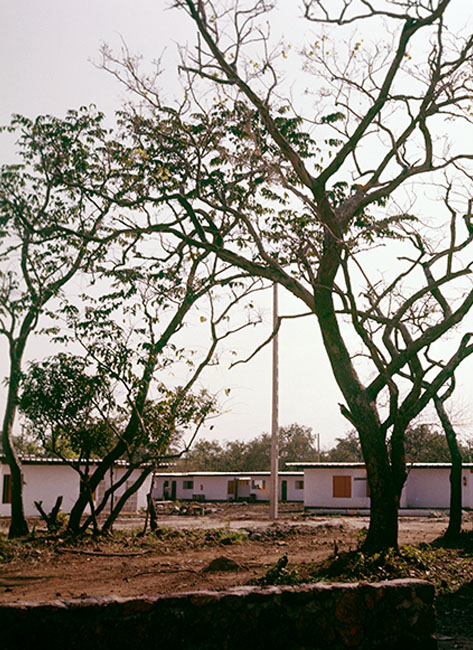Fria New Town, Fria (GN)
Michel Écochard; Guy Lagneau, Michel Weill & Jean Dimitrijevic; Michel Kalt, Daniel Pouradier-Duteil & Pierre Vignal
Samenvatting
Fria in Guinee is een goed voorbeeld van Franse, laatkoloniale industriële New Town-planning. Fria werd tussen 1956 en 1964 vanuit het niets ontworpen en gebouwd om zowel het hogere personeel als de arbeiders van de nieuwe bauxiet- en aluminiumfabriek van de Franse firma Péchiney te huisvesten. De planning en bouw van een fabriek die, zo was de bedoeling, maar liefst 15 procent van de totale wereldwijde aluminiumvoorraad zou produceren, viel niet toevallig samen met het moment waarop aankomend president Ahmed Sékou Touré de Guineese bevolking opriep vóór volledige onafhankelijkheid te stemmen en te weigeren deel te gaan uitmaken van de Communauté française. De aanleg van Fria werd beargumenteerd vanuit de gedachte dat zich hier een van de belangrijkste motoren van de Guineese industrialisatie en verstedelijking zou gaan bevinden. Bij uitstek de plaats dus waar de postkoloniale maatschappelijke en economische belofte in vervulling zou gaan.1 Maar tegelijkertijd nam Frankrijk via Péchiney de verantwoordelijkheid voor de planning van Fria op zich en eigende zich de aluminiumfabriek toe, om het moderniseringsproces te reguleren en bovendien de Franse economische belangen in Afrika te verdedigen met het oog op de naderende afscheiding. Deze dubbelzinnigheid – tussen emancipatoire, sociaal-economische verantwoordelijkheid en controle – is op verschillende niveaus terug te vinden in de planning en het ontwerp van Fria.



